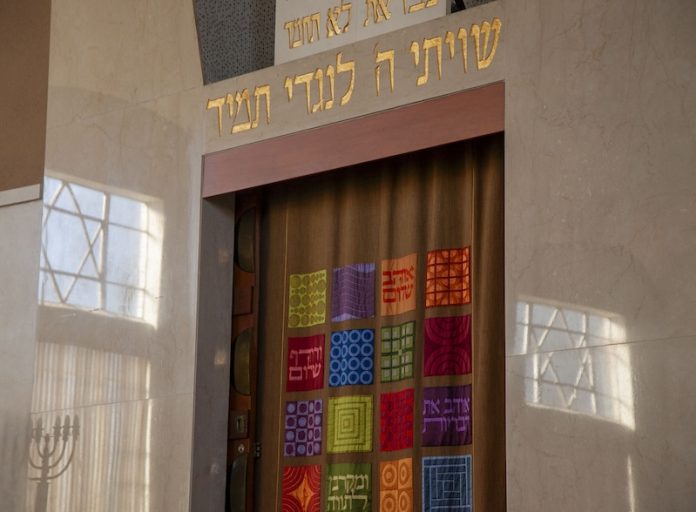As a recent college graduate, my father visited Alaska with his father to fish for salmon. An avid angler, he became immediately enchanted and subsequently returned every summer—solo or with friends—to explore and fish. Once I turned three, my dad introduced our family to the splendors of Alaska. This introduction proved successful and evolved into annual visits as a family. Today, I share his passion for our extraordinarily beautiful 49th state and spend every summer in Alaska. Over the years, we have developed friendships across the state and joined various neighborhood institutions, including the Chabad of Anchorage. Most importantly, the Alaskan Jewish community demonstrates that no matter how challenging the environment or how small the population, a thriving Jewish community can always be built and endure.
The Jewish community of Alaska, the largest state (by area), may only number approximately 5000, but it has a vibrant, storied history. The first Jews, primarily trappers and traders, arrived in Alaska with the Russian explorers. After the United States purchased Alaska from Russia, Jewish traders, miners, and furriers traveled to Alaska in a quest to gain wealth from Alaska’s ample natural resources. The number of Jews in Alaska significantly increased during the late 1890s Gold Rush, and then subsided, with few Jews remaining in Alaska.
Throughout the early 20th century, Jews arrived in and left Alaska in search of fortune. At the beginning of the century, Russian immigrant Abe Spring proposed that Alaska serve as a refuge for the persecuted Jews of Russia. However, Congress denied this proposal. Nonetheless, Alaska began to grow its Jewish population again. With the development and growth of Elmendorf Air Force base in Anchorage, the Jewish population increased with military personnel.
Today, most of Alaska’s Jews reside in Anchorage. There is a Reform synagogue, and Chabad established a presence in 1958. In the 1980s, Chabad opened the Jewish Center as a place of worship, Shabbat and holiday meals, learning opportunities, and community events. Years later, the Alaska Jewish Museum and Cultural Center opened, putting a focus on Jewish history and Jews’ contributions to Alaska. Also featured is a detailed exhibit on Operation Magic Carpet, in which Alaska Airlines played a critical role in transporting thousands of Yemenite Jews to Israel.
Rabbi Yossi and Esty Greenberg have led Chabad since the 1990s. Despite limited membership, Chabad offers extensive programming, services, and an early childhood center along with an after-school Jewish study program for older children and teens. There is no Jewish day school in Alaska, and so Chabad serves as the primary Judaic education resource.
Practicing Judaism in Alaska is not easy. During the winter, it is challenging to gather a minyan,
and so the Rabbi refers to his congregation as “the frozen chosen.” The limited daylight in the winter and the almost incessant daylight of the summer can make it confusing to determine candle lighting times. Fortunately, the Rabbi provides the much needed information. It is also difficult to find kosher food, especially meat and chicken, in Alaska. Though a few stores have begun selling kosher products, the supply is not consistent. My family and I have observed the High Holidays in Alaska, and we needed to arrange for kosher food to be flown into Anchorage from Seattle. For a brit milah, the mohel must be flown in from Seattle as well.
The community may be small, but it is close-knit and supportive. We are active members of the Chabad and have helped with fundraisers as well as the dedication of a Torah.
“We make a difference here! In bigger communities, sometimes you get lost,” commented Shani Green, an Anchorage resident for 25 years, and our now-close friend.
“Although we are remote, we are connected to all types of Judaism. Anyone who travels through Alaska—and there are a lot of visitors—we engage and become friends. Whether the visitor is Reform or Satmar [one of the largest Hasidic religious groups] or just Jewish, we realize that we are all Jewish, and that is what is most important,” commented David Green, a third generation Alaskan.
Plus, there are not too many places where you can sled or snowshoe to synagogue. Nor is it common to leave synagogue with eagles circling overhead and moose munching on nearby foliage. Overall, the Alaskan Jewish community is a welcoming one and recognizes the power in quality versus quantity.
Sources:
Interview with Rabbi Yossi and Esty Greenberg of the Chabad of Anchorage.
Interview with Shani and David Green, Anchorage residents and dedicated Chabad members.
The Alaska Jewish Museum and Cultural Center exhibits and archives
Join the conversation!





